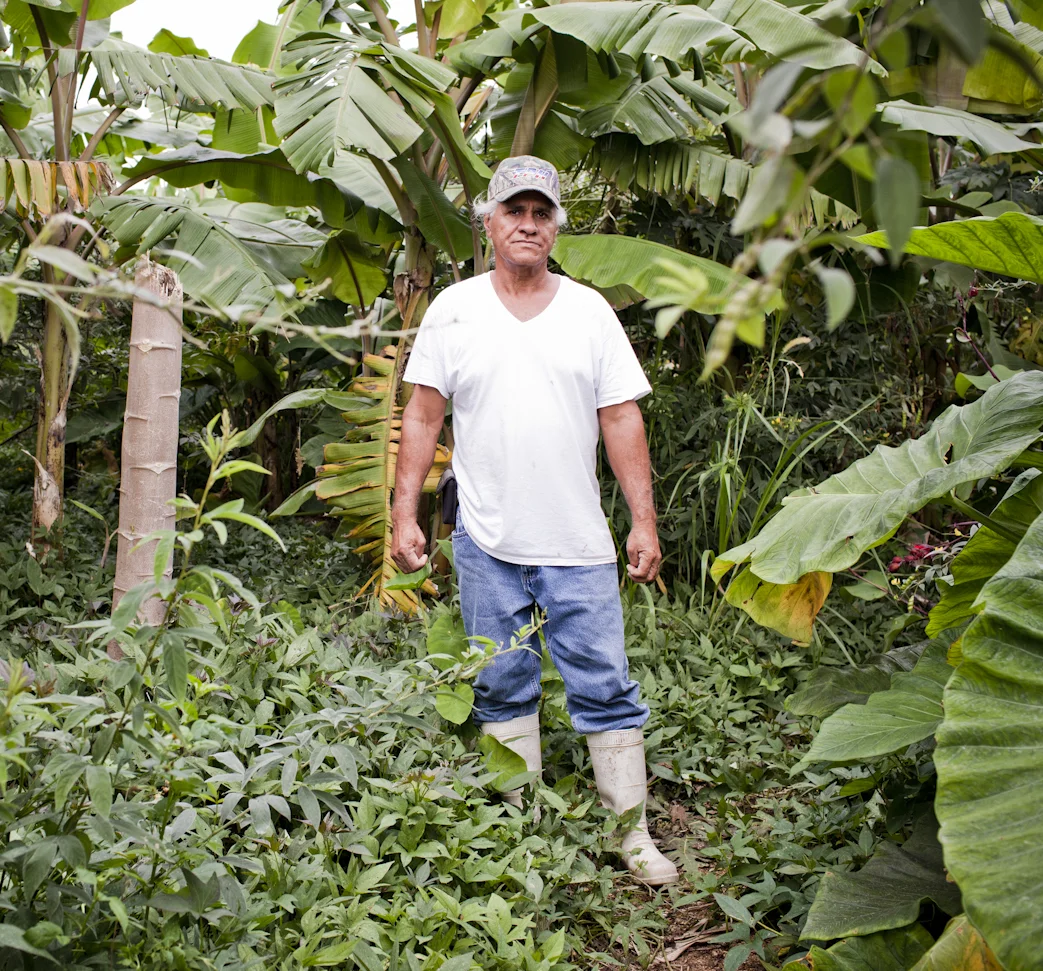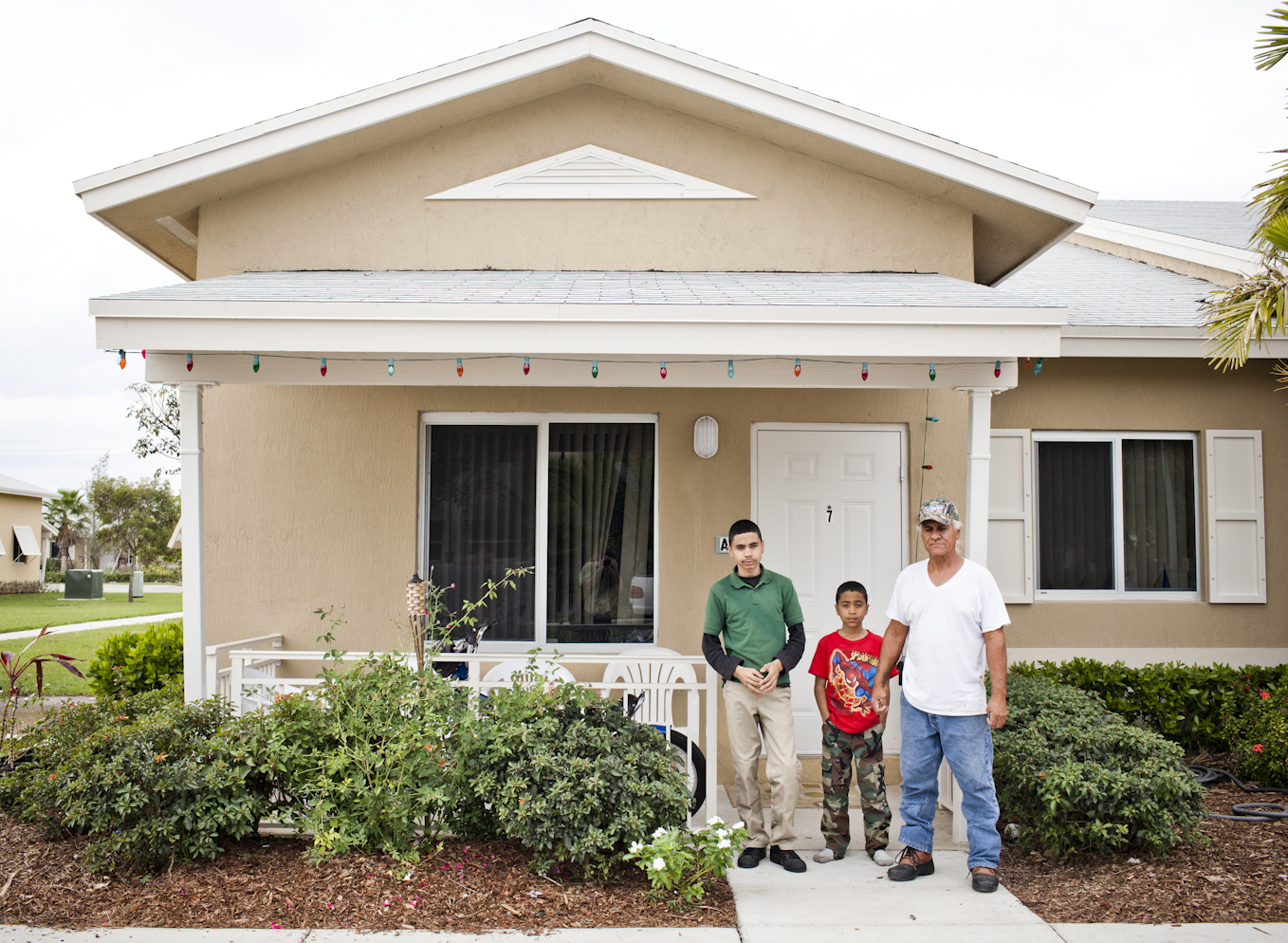Vida Verde Farms: Homestead, FL

Juan Lopez arrived to the US as an exile, with the Coast Guard flying overhead. He was in a twenty-seven-foot boat with around forty other Cubans. They landed on Cayo Hueso (Bone Key, as the Cubans refer to Key West). He took a bus to Miami. It was 1980. Castro had thrown up his hands and allowed for dissidents to leave the island after a wave of insurrection, including a busload of defectors who crashed through the gates of the Cuban-Peruvian embassy. For six months fishing boats and small leisure boats shuttled Cubans across the Florida Straits, bringing them to America.
Juan, then in his late 20s, was lucky. He had family already living in south Florida. He was a semi-skilled tradesman and he found construction work in Miami. For two decades he worked in construction, making decent money, supporting his wife and family of ten children. He paid $750/month in rent for an apartment.
Then the construction company laid him off. He couldn’t find other work. He couldn’t pay the bills or the rent. His wife and three kids have diabetes so the medical bills added up. Juan had to move his family out of the apartment. He even lived under a bridge for a few days. Eventually, after exhausting options in Miami, Juan moved with his wife and the three kids still living at home to Homestead where there was a homeless shelter managed by the Homeless Trust of Miami-Dade County.
Juan points in the direction of that shelter, the Chapman Shelter, as he walks me through the Vida Verde Farm. The five-acre poly-culture farm is part of a major redevelopment of the former Homestead Air Force Base. The base was destroyed in Hurricane Andrew and has since become an Air Reserve base with a chunk of land donated to the Homeless Trust. The Chapman Shelter opened in 1998, offering meals and refuge for homeless residents of the county for up to one year. But that left a difficult transition into conventional housing for many people.
So the Homeless Trust pushed further, reaching into the undeveloped land around the shelter with an ambitious plan for transitional, subsidized housing for low-income residents with at least one disabled family member. Partnering with Carrfour Supportive Housing, a non-profit developer, they came up with a plan for Verde Gardens, a 145-town-home neighborhood in a quiet, suburban layout of cul-de-sacs and wide lanes. They would also build a community market space and set aside 22 acres for a community farm. The project took years to get off the ground, but it opened in 2011, and the homes filled with residents soon after.
Filling homes with low-income families is one thing. Starting a working production poly-culture farm that incorporates neighborhood residents is an entirely different challenge. Carffour and the Homeless Trust selected the local urban agriculture non-profit Earth Learning to manage the Verde Gardens.
“We had one year to become sustainable,” says Mario Yanez, founder and director of Earth Learning. “That’s a tall order for a new community that’s just getting to know one another.”
They plowed five acres of the farm and planted tomato, greens, squash, beans, fruits. They overlaid banana, yucca, and sweet potato to create a traditional tropics poly-culture environment. They held workshops with community members and hired a handful to work, at living wages, on the farm full-time. That’s how Juan, who was by then a resident in one of the town homes, got involved. But even with the ample growing season, productive acres, beautiful market space and kitchen at the entrance to Verde Gardens, one year was not enough to render the farm sustainable. So Mario applied and received the CFP grant in 2012.
“Our next step for this year is to bring the community in,” says Mario. “We’ll have leadership workshops to identify and train leaders in the community who want to have a serious role in the farm. We’ll have skills training courses and we’ll share with the community the needs and challenges we face at the farm. We’re trying a subsidized CSA to bring more food into community homes.”
Verde Gardens is a permanent housing community. Residents pay 30% of their income in rent. And like so many neighborhoods in our current, unpredictable economy, Verde can be a transient place. In late 2012, for example, many residents were asked to leave after the first year-and-a-half. They had broken the rules of no alcohol or substance abuse in the community. So a new wave of community members moved in.
But Juan and others remain. Juan rides his custom-made chopper bicycle to the farm each day. He fixes irrigation lines, chops back overgrowth, harvests for the market. He buys much of his family’s food at the market on Saturdays. With so much diabetes in his family, he tries to add more vegetables to their Cuban-style diet of rice, beans, plantains, lettuce. But his kids still eat fast food. It’s a slow change. Juan looks so natural beneath the umbrella leaves of the banana plants, his white boots ankle-deep in sweet potato ground cover.
When he rides his bike home, he leaves the neat, fecund rows of the farm, passing through three acres of what is becoming a mature edible forest where the majestic banyan tree seems to be reaching its vine-entangled arms over passersby.
“If we could employee 300 of the residents at the farm, that would be great,” say Mario. “But we can’t. We’re doing well with the half dozen or so individuals who work with us and we get plenty of kids connecting with the farm, but encouraging the community to coalesce around it is our biggest challenge.”

